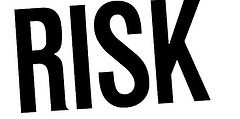|
|
|
Thursday, August 31st, 2017

I attended an AA-ISP* event tonight and heard something that struck me, “culture is a reward.” What a profound statement.
I’ll back up and explain what transpired tonight. I am in B2B sales and I have found that I must constantly sharpen my mind.
Sales is, to some degree, a game, but one requiring confidence. There is a lot of rejection and stress. Add to that the fact that most folks view sales as a negative field and it makes for a combustible result. I attended an event tonight that focuses on improving sales and the profession.
With all the negativity that surrounds the role, I have found the absolute opposite when actually at work.
Yes there is rejection, but there is also a lot of positive outcomes. I meet with clients that are trying to solve massively complex problems and I get to somehow help. My clients are usually more knowledgeable than I am, so I also learn something new.
That said, let’s get back to the statement I made earlier regarding culture as a reward.
Have you ever started a job thinking it was one way when it the reality turned out much different?
You felt like you got the rug pulled out from under you? I have and I hated it. The culture was negative and nothing was as it seemed. From the outside it was fine; from inside terrible.
On occasion, though, we luck out.
We stumble across an opportunity that delivers as promised, whether Google or some local shop that has a great team.
Doesn’t it feel like it’s a reward to just go to work? That is it!
A good culture is its own reward. I could not add to it because it is so true.
Now I just need to surround myself with it and never let go.
* American Association of Inside Sales Professionals
Image credit: GotCredit
Posted in Culture, Ryan's Journal | No Comments »
Monday, February 10th, 2014
 Ian Larkin is an assistant professor Harvard Business School and he shared some interesting research last spring. Ian Larkin is an assistant professor Harvard Business School and he shared some interesting research last spring.
The study focused on the effect of rewards, and although the subjects were laundry plant workers the results apply to knowledge workers, too.
The plan rewarded workers for being on time and not missing days.
The results were not as expected and productivity dropped.
In other words, the rewards plan ended up demotivating the workers.
Why?
Because it was easily gamed and structured to reward actions that were an expected part of the job, such as being on time.
Rewards should always be for going above and beyond the job description, showing initiative, creativity, reaching out to support not just the team, but others with whom they interface, etc.
It’s also important to remember that money isn’t always the best reward.
Most studies have proved that praise is an excellent driver of performance, productivity and good feelings—public recognition/kudos usually carries more weight than bought rewards such as meals or movie tickets.
“You can’t put a price on that. The recognition of hearing you did a good job and that others are hearing about it is worth more than money.”
The main thing to remember is that awards aren’t a solve-all panacea for an ailing team.
“You can’t say awards are good or bad. It depends on how they’re implemented.”
And they certainly won’t/can’t replace good management skills.
Flickr image credit: FSNR
Posted in Motivation, Retention | No Comments »
Monday, November 19th, 2012
 From two different authors. From two different authors.
“I haven’t worked this hard in years and have never felt so valued” —a former colleague who had changed jobs
“To the brain, receiving a compliment is as much a social reward as being rewarded money.” — Professor Norihiro Sadato, the study lead and professor at the National Institute for Physiological Sciences in Japan
Taken together they should drive home the value of telling your people outright how much you value them or how good something they did was,
I’m not talking about compliments for compliments sake—those are hollow and only extend the bad habits learned in school, such as when kids are complimented just for showing up on time.
I’m also not referring to ‘stars’; those almost mythical employees who some managers seem to value more highly than their entire team. (Guess which is more easily replaced the one star or the entire team.)
I do mean the heartfelt appreciation for a task well done or for being a good team member.
So in the stress and pressure of achieving deadlines don’t lose site of the two most successful motivation and retention factors yet found:
- the chance to make a difference; and
- being appreciated.
And just think—they don’t cost a dime.
Flickr image credit: dinny
Posted in Retention | No Comments »
Thursday, August 27th, 2009
Terms come and terms go, but their meaning stays fairly constant.
Managers used to strive for employee buy-in, ownership, commitment, involvement; today it’s engagement.
 Management has worked to develop that behavior for decades, whereas the way to achieve it is as old as humanity. Management has worked to develop that behavior for decades, whereas the way to achieve it is as old as humanity.
Disengagement is costly, “Gallup estimates it costs the US economy about $300bn a year and that 17 per cent of employees are “actively” disengaged. These employees each cost their employers $13,000 a year in lost productivity.” That was last year and I’d bet that 2009 will be worse.
Managers of organizations with a high level of engagement know that achieving that is as simple as 1, 2, 3—4.
The 4 acts of engagement are
- respect;
- encouragement;
- support; and
- rewards.
This isn’t exactly secret management knowledge. There are thousands of books, hundreds of classes, dozens of blogs and forums all teaching variations on this theme.
So if it’s that simple, why isn’t it put into practice more often?
MAP (mindset, attitude, philosophy™) is the reason. MAP shapes a person’s actions.
If you don’t really believe in the value or numbers 1 or 2, you can talk all day and your people will hear what you say as hollow, i.e., no authenticity.
Number 3, support, includes skills training and career development, but how do you provide these when money is tight or, even in good times, when your company doesn’t believe in it?
Ingenuity—not just yours, but your group’s.
Your people aren’t dumb, they know when the company can’t/won’t fund training, but there are tons of ways to work around that, such as building up a broad departmental learning library and sharing their own expertise with each other during organized brown bag lunch sessions.
Number 4 also usually involves money, as it should. But when there’s an authentic, provable lack of funds to provide significant rewards, every company can find enough, monetary and otherwise, to prove that they value their people’s contributions.
Again, people aren’t dumb. If the CEO, execs or their boss fly first class or receive a bonus after telling people that the company can’t afford raises or rewards, it shouldn’t be a surprise when they disengage and eventually leave.
That’s it; not rocket science, but you must do it consistently, sincerely and with great enthusiasm—no matter what else is going on.
Image credit: arte_ram on sxc.hu
Posted in Business info, Compensation, Culture, Motivation, Retention | 1 Comment »
Thursday, May 28th, 2009
In Richard’s interview with Pat Lynch regarding the EFCA, she said that employers have a choice, either take care of their people or the unions will. Lynch identified four primary issues on which employees rate their job satisfaction:
- Employee satisfaction with immediate supervisor
- Employee voice – do employees feel safe in challenging the status quo, do employees believe their ideas will be considered
- Employee perceptions of procedural fairness
- Rewards and recognition – these go far beyond compensation, which is not a significant element of satisfaction. Recognition is extremely important.
Richard suggested to start with an online satisfaction survey to learn how employees perceive management and the company and then to act on the results.
 He also said, “come back Thursday to hear Miki’s take on keeping employees happy,” which isn’t really fair since everything I write is about keeping them happy and I even have a post called that. He also said, “come back Thursday to hear Miki’s take on keeping employees happy,” which isn’t really fair since everything I write is about keeping them happy and I even have a post called that.
But I’m committed, so let’s do this again.
In today’s language, ‘happy’ means ‘engaged’, which isn’t a new topic—think buy-in, ownership, commitment, involvement, etc.
Although the terms keep changing the behavior has been consistently on management’s radar for decades. The funny part is that the way to achieve it is as old as humanity and ties directly to the Lynch’s four issues.
The big four of engagement are
- respect;
- encouragement;
- support; and
- rewards.
Although descriptions and phrasing may vary, when all is said and done it always comes down to these four basics.
It’s not as if this is secret management knowledge. There are thousands of books, hundreds of classes, dozens of blogs and forums all teaching variations on this theme. I read a good article on it last year, but it was the comments that had the real value.
The real question then is if it’s that simple, why isn’t it put into practice more often?
MAP (mindset, attitude, philosophy™) is the reason. MAP shapes a person’s actions
- If you don’t really believe in the value or numbers 1 or 2, you can talk all day and your people will hear what you say as hollow, i.e., no authenticity.
- Number 3, support, includes skills training and career development. Ingenuity. Not just yours, but your group’s. Your people aren’t dumb, they know when the company can’t/won’t fund training, but there are tons of ways work around that, such as sharing their own expertise with each other during organized brown bag lunch sessions.
- Number 4 usually involves money, but public recognition often ranks higher on the scale. And when there’s an authentic, provable lack of funds to provide significant rewards, every company can find other ways to prove that they value their people’s contributions.
There’s a final component that needs to permeate all ranks of management, it’s what I call the believability factor, BF for short.
Believability is a two-edged sword. A strong BF draws people to you; it helps them hear what you have to say; see the vision that you present; and underscores their willingness to follow your lead. Without it, even the straightest shooters may be casually dismissed.
The flip side is definitely worse, because con people, crooks and even murderers often have BF in abundance.
If you’d like to learn more about how to evaluate your own BF and change it if you so desire, read MAP your BF—at work, at home, even in the bedroom!
In short, keeping people happy means embedding this stuff deep within your culture, because it can’t be faked or implemented in a couple of weeks.
That’s it; it’s not rocket science, but must be done from the top and every level down consistently, sincerely and with great enthusiasm.
Image credit: soul2love on flickr
Posted in Business info, Culture, Motivation | No Comments »
Thursday, May 14th, 2009
I was looking at some old notes and found something I’d saved from the comments area of a post on changing corporate culture at Dell’s IdeaStorm, “After all, if you don’t challenge yourselves, do you expect to grow? You certainly won’t LEAD.”
 I don’t know if it’s original, but it is short, sweet and very true. I don’t know if it’s original, but it is short, sweet and very true.
If there’s one thing that challenging yourself does it’s to upset the status quo—that’s what forces growth.
That’s true for your company, department, team—and yourself.
Challenges usually involve risk, but risk is healthy.
Risk can be safe if you
- evaluate it;
- perform worst case analysis; and
- go for it.
Risk often, fail fast, learn and move on.
You’ll blow away the competition.
Image credit: flattop341 on flickr
Posted in Business info, Culture, Personal Growth | No Comments »
|
 Subscribe to
Subscribe to
MAPping Company Success
About Miki 
Clarify your exec summary, website, etc.
Have a quick question or just want to chat? Feel free to write or call me at 360.335.8054
The 12 Ingredients of a Fillable Req
CheatSheet for InterviewERS
CheatSheet for InterviewEEs™
Give your mind a rest. Here are 4 quick ways to get rid of kinks, break a logjam or juice your creativity!
Creative mousing
Bubblewrap!
Animal innovation
Brain teaser
The latest disaster is here at home; donate to the East Coast recovery efforts now!
Text REDCROSS to 90999 to make a $10 donation or call 00.733.2767. $10 really really does make a difference and you'll never miss it.
And always donate what you can whenever you can
The following accept cash and in-kind donations: Doctors Without Borders, UNICEF, Red Cross, World Food Program, Save the Children
*/
?>About Miki
About KG
Clarify your exec summary, website, marketing collateral, etc.
Have a question or just want to chat @ no cost? Feel free to write
Download useful assistance now.
Entrepreneurs face difficulties that are hard for most people to imagine, let alone understand. You can find anonymous help and connections that do understand at 7 cups of tea.
Crises never end.
$10 really does make a difference and you’ll never miss it,
while $10 a month has exponential power.
Always donate what you can whenever you can.
The following accept cash and in-kind donations:
|





 Ian Larkin is an assistant professor Harvard Business School and he shared some
Ian Larkin is an assistant professor Harvard Business School and he shared some  From two different authors.
From two different authors. Management has worked to develop that behavior for decades, whereas the way to achieve it is as old as humanity.
Management has worked to develop that behavior for decades, whereas the way to achieve it is as old as humanity. He also said, “come back Thursday to hear Miki’s take on keeping employees happy,” which isn’t really fair since everything I write is about keeping them happy and I even have a
He also said, “come back Thursday to hear Miki’s take on keeping employees happy,” which isn’t really fair since everything I write is about keeping them happy and I even have a  I don’t know if it’s original, but it is short, sweet and very true.
I don’t know if it’s original, but it is short, sweet and very true.
